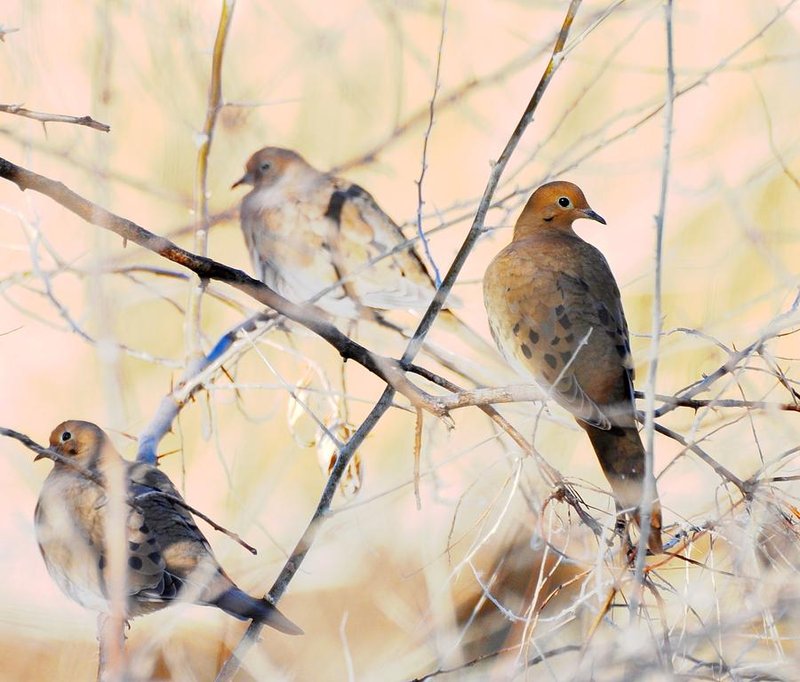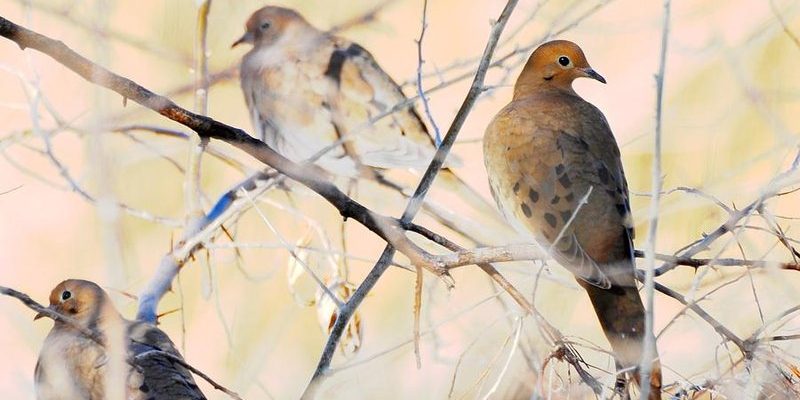
Doves are among the most beloved birds across the globe, often symbolizing peace, love, and tranquility. With their soft cooing sounds and gentle demeanor, they can bring a sense of calmness to any environment. You might have seen them in your backyard, parks, or urban settings, gracefully gliding through the air. But what do you really know about these fascinating creatures?
In this article, we’ll explore everything you need to know about doves, from their physical characteristics to their behaviors and habitats. Think of it as a deep dive into the world of these charming birds, which, much like a warm cup of coffee in the morning, brings comfort and joy. Whether you’re a bird enthusiast or just curious, there’s plenty to learn!
Physical Characteristics of Doves
Doves are generally medium-sized birds, with a variety of species showcasing different colors and markings. Most doves have a rounded body, a small head, and a long tail, which adds to their graceful appearance. Their feathers typically feature soft shades of gray, brown, or white, allowing them to blend into their surroundings. For example, the common mourning dove has a distinct slender shape and a long, pointed tail that helps it maneuver while flying.
One of the interesting things about doves is their size. Most doves measure about 9 to 14 inches in length, with males often being slightly larger than females. Their lightweight bodies allow them to soar effortlessly in the sky, covering great distances during migration or while searching for food. Additionally, doves have very keen eyesight, which is crucial for spotting predators from a distance.
Most doves also exhibit sexual dimorphism—though it’s subtle. Males tend to be more colorful than females, sporting brighter plumage to attract mates. This difference is particularly pronounced in species like the Nicobar pigeon, where males flaunt dazzling greens and blues. So, when you spot a dove, take a moment to appreciate the beauty of its design!
Habitat and Distribution
Doves are incredibly adaptable birds and can thrive in a variety of environments. You can find them in forests, grasslands, urban areas, and even deserts. Essentially, if there’s food and a place to nest, there’s a good chance doves will make it their home. One of the reasons for their success is their ability to live close to humans, often seen congregating in parks or gardens.
Their global distribution is quite fascinating as well. Doves are found on every continent except Antarctica. In North America, the mourning dove is one of the most common, whereas the ring-necked dove is prevalent in Africa and Asia. This wide range means that the sounds of cooing doves are likely familiar to many, regardless of where you live.
Different species may prefer specific habitats. For instance, the Eurasian collared dove often inhabits urban areas and farms, while the rock dove typically nests on cliffs or buildings. Their adaptability has helped them spread across diverse landscapes, making them one of the most common birds worldwide.
Diet and Feeding Habits
Doves primarily eat seeds, fruits, and grains, making them granivores. Their diet can vary based on their habitat and the time of year. For example, during the winter months, when food is scarce, they may forage for seeds in open fields or gardens. You might be surprised to learn that doves can consume seeds that are much larger than you think. Their strong beaks allow them to crack open tough seeds, which is essential for their survival.
What’s even more fascinating is how doves eat. They often forage on the ground, methodically moving through the underbrush to find hidden treats. If you’ve ever watched a dove eat, you’ll notice they have a unique way of swallowing. They take the food in and use specialized muscles in their throat to grind it against their gizzard, which is essential for digestion. It’s a reminder of how nature has equipped these birds to thrive in their environments.
Doves also engage in a behavior called “preening,” where they use their beaks to clean their feathers. This not only helps them stay tidy but also removes parasites and debris. Clean feathers are essential for flying, especially since doves rely heavily on flight for foraging and escaping predators.
Reproduction and Nesting
Doves are known for their unique and often romantic courtship rituals. Male doves perform elaborate displays to woo females, which typically include cooing, puffing up their chests, and bowing. Once a pair has formed a bond, they tend to mate for life, which is why doves are often seen as symbols of loyalty and love.
Nesting usually takes place in trees, shrubs, or even on building ledges. Doves don’t build elaborate nests; instead, they create simple structures with twigs and grass, which are often quite flimsy. This can seem surprising since they’re such gentle and caring parents. Female doves usually lay two eggs at a time, and both parents take turns incubating them for about 14 days.
Once the chicks hatch, they rely heavily on their parents for food and protection. The parents produce a special substance called “pigeon milk,” rich in nutrients, to feed their young. It’s a fascinating process that highlights the dedication of these birds to their offspring. As the chicks grow, they learn to fly and forage with their parents, becoming independent in a matter of weeks.
Social Behavior
Doves are inherently social animals. You’ll often see them in pairs or small flocks, communicating with a series of soft coos and gentle nods. Their social behavior is especially pronounced during the breeding season when they engage in intricate courtship displays. Observing these behaviors can provide a glimpse into their strong bonding practices.
Interestingly, doves are also known for their strong homing instincts. They have been used historically as messenger birds, capable of finding their way home from remarkable distances. This ability is not only fascinating but showcases their intelligence. During flocks, they rely on social cues to navigate and search for food, helping each other find the best spots.
In urban areas, doves often coexist comfortably with humans, finding food sources and nesting sites in buildings and parks. Their adaptability to living near people is a testament to their resilience. Watching them interact with one another can be a delightful experience that highlights the beauty of nature even in bustling city settings.
Interesting Facts about Doves
| Common Species | Mourning Dove, Rock Dove, Eurasian Collared Dove |
| Average Lifespan | 5 to 15 years in the wild |
| Weight | 4 to 8 ounces |
| Wingspan | 18 to 24 inches |
| Breeding Season | Spring to early fall |
Conservation Status
Many dove species, such as the mourning dove, are abundant and widespread, which is good news for bird lovers. However, some species face challenges due to habitat loss, hunting, and climate change. It’s crucial to understand that while many doves thrive, others need our help to survive.
Conservation efforts are underway in various parts of the world to protect specific dove species and their habitats. These efforts often include creating protected areas, restoring native plants, and implementing regulations to control hunting. Community involvement also plays a significant role. Educating people about the importance of doves and how to coexist peacefully with them is essential for their long-term survival.
Every little bit helps, from planting native flowers in your garden to reporting illegal hunting activities. By raising awareness and contributing to conservation efforts, you can play a part in ensuring that future generations can enjoy these beautiful birds.
FAQ
What is the difference between a dove and a pigeon?
Doves and pigeons are often mentioned together, and while they belong to the same family, there are some differences. Generally, doves are smaller and more slender than pigeons, which tend to be larger and bulkier. For example, the rock dove is quite robust compared to the sleek mourning dove. Additionally, doves usually have softer coos, while pigeons have a more pronounced cooing sound.
Can doves be kept as pets?
Yes, doves can be kept as pets! They are gentle birds that can bond with their owners. If you’re considering adopting a dove, remember they thrive in pairs since they are social creatures. Providing them with a spacious cage and opportunities for exercise and social interaction is essential for their well-being. Just like a puppy or kitten, they need love, care, and attention to flourish.
How do doves communicate?
Doves communicate primarily through sound. They produce a variety of coos, which can express everything from alarm to courtship. You might have noticed different pitches in their cooing—these variations serve different purposes. Along with vocalizations, they also use body language, like puffing up and bowing, to signal their intentions to one another.
Are all doves the same color?
No, not all doves are the same color! While many doves have soft grays and whites, there’s considerable diversity among species. For example, the Nicobar pigeon has vibrant greens and blues, whereas the mourning dove is mostly a muted brown. Each species has its unique color palette that helps it adapt to its environment.
Do doves migrate?
Many dove species do migrate, though the extent varies. For instance, the mourning dove migrates to warmer regions during colder months, while others, like the rock dove, may stay in one place year-round if conditions are favorable. Watching these birds during migration can be a beautiful reminder of their resilience and adaptability.
How long do pigeons and doves live?
The lifespan of doves can vary based on species and habitat. On average, most doves live between 5 to 15 years in the wild. However, with proper care, doves in captivity can sometimes live longer. The key to a longer life often lies in a healthy diet, clean environment, and social interaction.
What do I do if I find an injured dove?
If you come across an injured dove, it’s important to handle the situation carefully. Avoid touching the bird unless necessary, as this can cause stress. If the bird is in immediate danger, you may gently place it in a box lined with a soft cloth and keep it in a quiet, warm place. It’s advisable to contact a local wildlife rehabilitation center for guidance and help.
Can doves be found in urban areas?
Yes, doves are quite common in urban areas. Their ability to adapt to human environments allows them to thrive in cities, parks, and residential areas. You’ll often see them in gardens, foraging for food or nesting on balconies. Their presence in urban areas is a testament to their resilience and adaptability to different habitats.
What is the best food for doves?
Doves thrive on a diet primarily composed of seeds, grains, and fruits. If you’re looking to feed doves in your garden, consider providing a seed mix specifically designed for them. It’s important to offer clean water as well, particularly during hot months. Avoid processed foods, which can be unhealthy for these sensitive birds.

